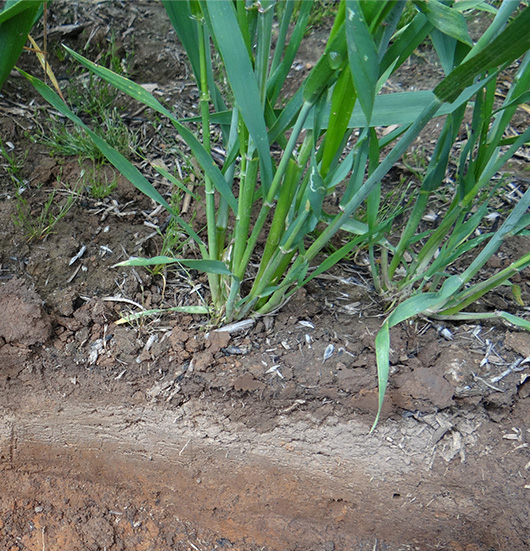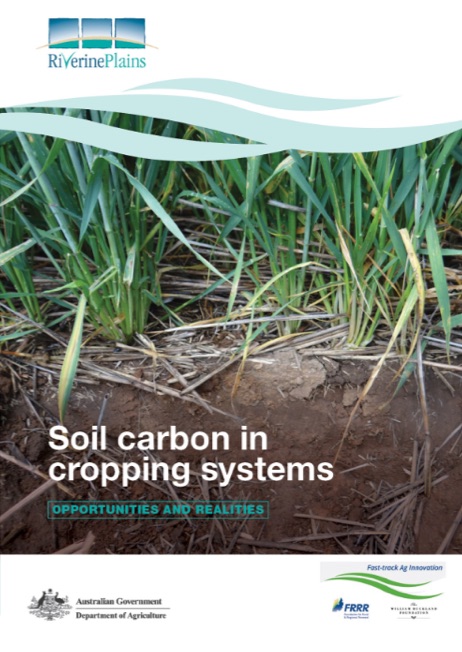Soil Carbon in Cropping Systems
Learnings from the Riverine Plains and GRDC Stubble Project, which evaluated the impact of different stubble management techniques and agronomic practices on yield and quality.

Publication date
01 Jul 2017
Publication partner
This report summarises results from the Accelerated humus formation from crop residues project (2012–15), through funding from the Australian Government’s Department of Agriculture Action on the Ground program.
Financial support for this publication was provided through the Sustainable Agriculture Victoria — Fast Tracking Innovation Initiative, made possible with the support of the Foundation for Rural and Regional Renewal (FRRR) together with the William Buckland Foundation.
LEARN ABOUT THE CHALLENGES AND BENEFITS OF MANAGING STUBBLE TO INCREASE SOIL CARBON
- Is it possible to retain more of the carbon in stubble, and so increase our soil carbon values?
- Is it worth the effort?
Key messages
- The value of adding post-harvest fertiliser to increase soil organic carbon (SOC) values is not clear cut.
- At least during the first few years of application, post-harvest fertiliser addition does not have a statistically measurable impact on SOC, nor on the fractions thereof.
- In the Riverine Plains, in-paddock variability and lack of reliable summer rainfall to optimise microbial cycling, means that the chance of achieving measurable gains in sequestered SOC in the short term are low.
- If farmers were to continue applying post-harvest fertiliser in the hope that after 5–10 years there might be a positive result, the monetary value of that stored SOC would have to be significant in order to recoup costs involved in achieving it.
- This short-term project has not clearly demonstrated that more of the carbon in stubble can be retained through post-harvest fertiliser addition, and that SOC values have not significantly increased.
- This project did not clearly identify any unequivocal benefits to post-harvest fertiliser application. However, it demonstrated that post-harvest fertiliser application leads to greater emissions of N20 (a potent greenhouse gas), increased potential for nitrogen loss through leaching, and significant costs in fertiliser purchase and spreading.
- While there may be some financial gain in managing SOC for sequestration, there are many greater benefits in continuing to focus on maintaining soil cover and SOM. Even if SOC values do not increase, maintaining high microbial activity will have soil physical, chemical and biological benefits that go beyond the actual SOC value.
NEWS
Discover unique perspectives on agriculture from across the Riverine Plains.
-
Livestock
-
People
-
Grains
-
Sustainability

